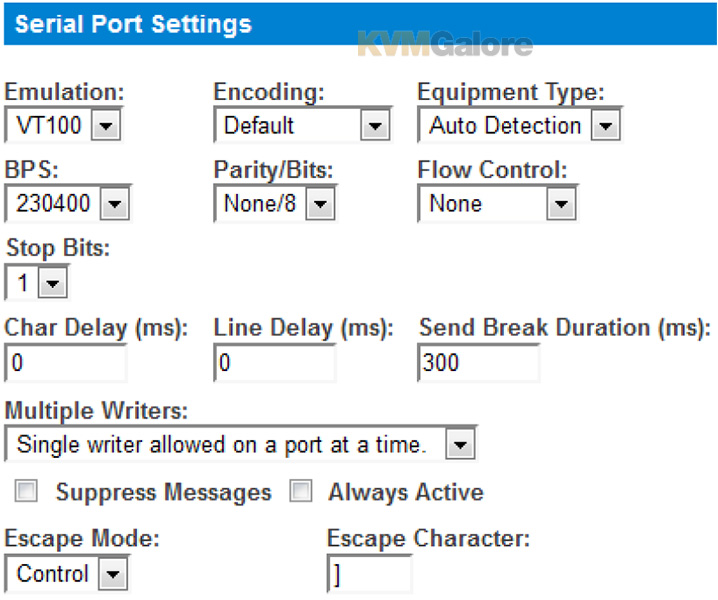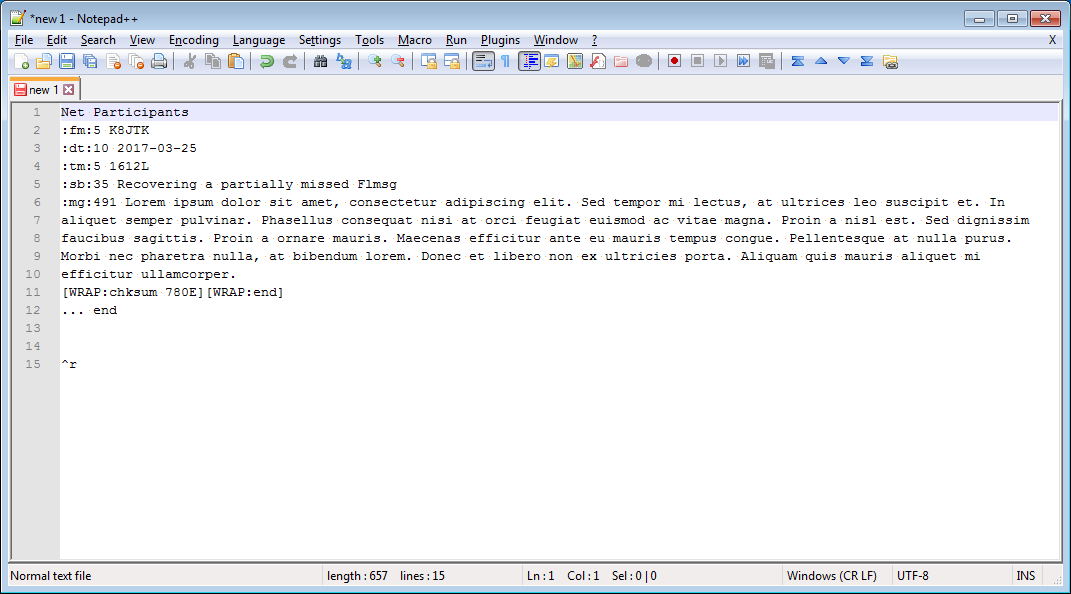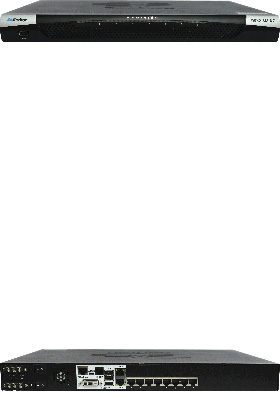Baud Port Checker Raritan
Professional A/V equipment employed in signal management systems is commonly controlled by the RS-232 serial communication protocol. Amplifiers, switchers, dimmers, extenders, projectors and matrix switchers are just a few examples of the kinds of equipment controlled by the RS-232 protocol.An understanding of the underlying technology of the RS-232 protocol can be indispensable when faced with problems while using your equipment. Knowing what to look for can minimize the time spent troubleshooting RS-232 connections.In this article we will attempt to give you a basic understanding of RS-232 connections and help you resolve any serial port problems you encounter. Contents.RS-232 ProtocolThe Electronic Industries Association (EIA) originally defined RS-232 in 1962 as a recommended standard (RS) for interfacing with a modem. In January 1987 the standard was amended to the most current version, RS-232D. These amendments were made to ensure compatibility with international standards CCITT V.24, V.28, and IS2110. RS-232 PinoutsBelow are the standard pin-outs for the RS-232 protocol for IBM compatible computers.
Baud Port Checker Raritan Number
The most common connections contain either a 9-pin or a 25-pin connector.Not all pins in the 25-pin connector are used for transmitting data. The extra pins are commonly used for port loop-back testing. The 9-pin and the 25-pin connectors have opposite designations for their number 2 and 3 pins. A/V equipment usually uses a 9-pin connector for its RS-232 connections.
In many cases the pin-outs can be different on your A/V equipment and the controlling system or computer. An example would be where the 2 and 3 pins are reversed which allows the connection to be made with pin-to-pin wiring between a 9-pin connector and 9-pin cable. “Terminal block” connectors are becoming popular with A/V equipment manufacturers. Building algorithms in python.
These connectors enable easy installation with no soldering required. Voltage RangesRS-232 pins have a standard voltage range of -15V to +15V for all of its signal pins. Voltage swings that occur while transmitting data can total 30V. RS-232 ports can work with voltages as low as -5V to +5V. Compatibility with different equipment types is made possible by the wide range of voltages that the RS-232 can use and this also helps to minimize interference by allowing for a greater noise margin.RS-232 signal lines can generate substantial electrical noise due to the large voltage fluctuations. This means you should not run this signal close to high-impedance microphone or audio lines. If you do require these signals to be running near each other you need to properly shield all of your audio wires.
Baud RateBaud rate measures the speed of data transmission between two ports and is generally thought of as bits per second. The RS-232 protocol controls the baud rate.
Baud rates usually fall into the range of 1200 to 19200. Starting at 1200, rates double through the common baud rates of 1200, 2400, 4800, 9600 and 19200. Cable Length LimitationsAs the baud rate increases the serial cable connecting your A/V equipment and its controlling system must decrease. Generally a 100 foot cable is appropriate for 1200 to 2400 baud. For 9600 baud your cable should be a maximum length of 50 feet and you need to shorten this to 20 feet is you are transmitting at 19200 baud.
Baud Port Checker Raritan New Jersey
TroubleshootingSerial port troubleshooting falls into two broad categories. Software incompatibilities or conflicts can cause your connection problems as can physical connection problems with your hardware. HardwareOne of the most common serial port errors that installers encounter when connecting a device to the control system is incorrect wiring. Most control systems only require the connection of two wires to the controlled device. The Transmit (XMT) and Ground (GND) pins on the control system are connected to the Receive (RCV) and Ground (GND) pins on the controlled device respectively, as shown below (Fig. 1)If the control system needs to receive a response from the controlled device, a third wire will also need to be connected (Fig.
For example, this is the recommended wiring if you are controlling a device through your computer’s COM port. Confirming a Proper ConnectionIf all of the pins are not labelled it can be difficult to tell if the wiring between control system port and controlled device port has been done correctly. If a terminal block connector is in use you can use a voltmeter to monitor the voltage and ascertain that the connection is good. Test the voltage with the voltmeter set to “DC”. You want the reading between the RCV pin and the GND pin on the terminal block connector to be between -12V and -6V. Your XMT line should have the same reading as seen below (Fig. 3)If the voltage on the receive line remains at 0 volts after you have connected the control system and the controlled device, this indicates that your serial port connection problems are the result of the Transmit and Receive lines being reversed (Fig.

SoftwareIf your COM port error persists after you have verified the hardware connection the problem may lie in the software communications settings for both the controlling system and the controlled device.The software settings must be identical for correct communication between the devices. Baud rate is one parameter that must match on both systems, so if your control system is operating at 2400 baud, you need to have your device set to 2400 baud as well. Data Bits, Parity and Stop Bits are other parameters that must be set identically for communication to flow. The number of bits transmitted in a single character is referred to as the Data Bits and can be set to either 7 or 8. Parity defines if the number of 1s in a single transmission is odd or even. It can be set to None if parity is not important to your application.The Stop Bit can be set to 0, 1 or 2 and defines the end of the transmission. A/V devices are usually set with Data Bits at 8, Parity at None and 1 Stop Bit.
This is known as an “8 n 1” setting. If you are troubleshooting serial port communication issues, check that all these settings are the same on both ends of your connection.software is a tool offered by Eltima Software that works as an aid in serial port communication troubleshooting. It can greatly reduce the time required to find and resolve issues with your serial port communications.Serial Port Debugger assists in COM port troubleshooting by enabling you to monitor, log and analyze any of your serial ports. The software tool’s user interface lets you look at this data in a number of different views that will help you track down problems quickly. You can also emulate sending data to a serial device and playback sessions so you can review multiple instances of the same data being sent to a port.

This allows you to search for differences that may lead you to the solution of your problem.RS232 debug software can prove to be an indispensable tool when confronted with serial port communication problems. Put it in your software toolbox today and start streamlining your troubleshooting sessions. Copyright © 2020 Electronic Team, Inc. And its affiliates and licensors. All rights are expressly reserved. The software programs and accompanying documentation are the copyrighted property of their respective owners and protected by copyright laws and international intellectual property treaties.

USB Network Gate ®, Serial to Ethernet Connector ®, Virtual Serial Port Driver ®, Serial Port Monitor ® and all related product and service names, design marks and slogans are the trademarks and/or registered trademarks of Electronic Team, Inc. And its affiliates and/or its licensors.
All other product and service marks contained herein are the trademarks of their respective owners. Any use of Electronic Team, Inc.’s and/or its affiliates’ or third parties’ trademarks or logos without the prior written consent of their respective owners is strictly prohibited.
Using any microcontroller probably not. If the pin is shared by a gpio you can poll/interrupt on state changes and measure, the smallest measurement should give you the baud rate. Alternatively you can just scan frequencies, if you get a hit it may still be wrong, could be 2x, 3x, 4x, etc too slow.
Can get difficult to impossible, to correctly line up just by adjusting your baud, you also need to have a data pattern (frame format, etc) that you can look for when your framing errors go away.–Jun 15 '17 at 13:30. No, not if you want to get done quickly. Ten years doing this type of task says an oscilloscope or even an inexpensive USB-based logic analyzer is your best solution here. This isn't a software problem yet, it's a signal detection problem. You should be able to clear this up in a few minutes with the right instrument.I'm assuming you're only doing this exercise because the transmitting part is one for which you cannot find a datasheet. If you had a datasheet in hand, that would clear this up, or at least suggest the possible baud rates you should try.